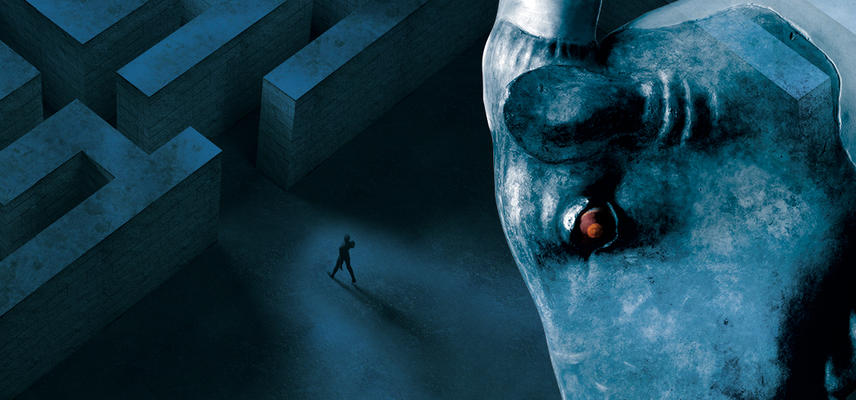THE STORY OF ASSASSIN'S CREED ODYSSEY
Find out how research into the myth of the Labyrinth, and the Palace at Knossos, shaped the popular video game Assassin’s Creed Odyssey. This research into the game is brought to life in a special film showing in the Ashmolean's Labyrinth exhibition.
3-minute read
By Romain Fascialé
Strategic Alliances Project Manager, Ubisoft
Assassin’s Creed Odyssey, the action-adventure video game launched by Ubisoft in 2018, takes place during the Peloponnesian War, long after the heyday of Knossos on the island of Crete
Merging history, mythology and art was a subject of fascination for Ubisoft’s creative teams. They were particularly interested in the remarkable architecture of Knossos which was incredibly advanced and complex for such an ancient civilisation.
There was also an artistic opportunity as Knossos is a place shrouded in mystery, where historical facts, myths and legends coexist and blend together. As a player, you are invited to venture in, explore and learn.
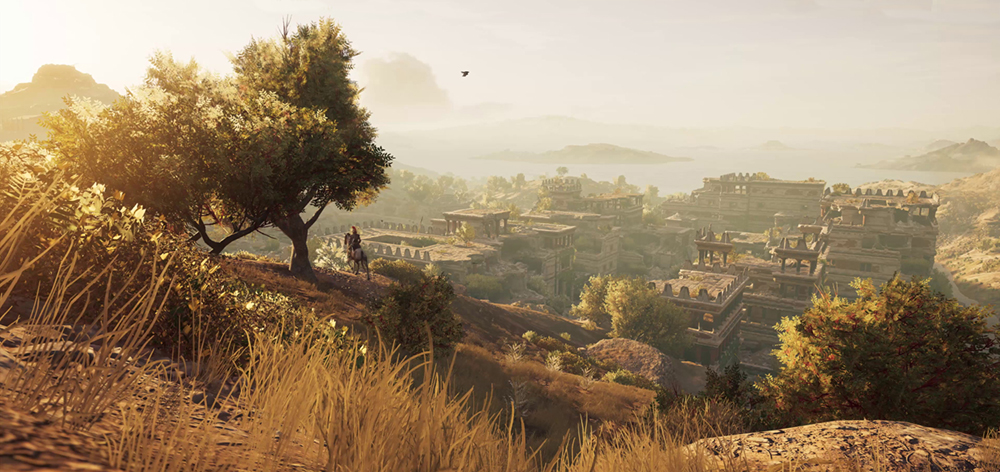
The Knossos landscape © Assassin's Creed & Ubisoft Entertainment
Knossos is a perfect location for the Assassin’s Creed franchise, which is built on exploration, adventure and history.
The virtual recreation of the Palace of Knossos is the result of documentation, collaboration with historians, references from modern literature, and the use of archaeological data from various institutions including the American School of Classical Studies of Athens and the British School of Athens.
Ubisoft team members also went on a field trip to visit the real archaeological site in Crete as well as the Heraklion Archaeological Museum.

View of Knossos Palace © Assassin's Creed & Ubisoft Entertainment
That trip gave them the opportunity to study the ruins, the reconstructions made by Sir Arthur Evans and his team, and to observe all sorts of different objects, artefacts and mural paintings.
During the field trip to Knossos, Ubisoft’s creative teams were struck by the labyrinth-like structure of the ruins. This directly influenced the way the Palace was designed in the game.
In the video game, the Palace is also strongly driven by narrative and game design needs, so there are some creative adjustments. For example, one of the most iconic features of the Assassin’s Creed franchise is parkour which involves running, climbing or jumping across obstacles in a quick, efficient, and often artistic way.
In Assassin’s Creed Odyssey, some façades and walls of Knossos Palace were designed to be higher or more imposing than they probably would have been in real life at the time, in order to give players the opportunity to explore it in a fun way.
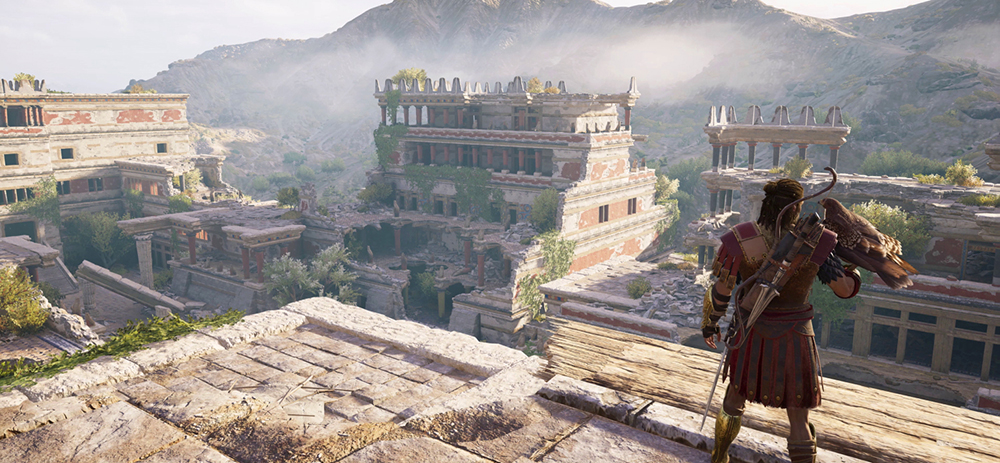
Game player surveying the Palace landscape © Assassin's Creed & Ubisoft Entertainment
In the game itself, the Palace features key and distinctive elements of the real archaeological site in Crete, although of course some artistic liberties were taken. The design of the Central Court in the game was strongly influenced by Francis G Newton’s partial reconstruction in Knossos.
The Horns of Consecration on the Palace’s roofs and the iconic painted wooden columns, in the game, were inspired by the reconstructions made by Sir Arthur Evans and his team.


Wall paintings featured in the game and below some of the frescoes in detail © Assassin's Creed & Ubisoft Entertainment
There are wall paintings featured throughout the Palace in the game. Our creative teams had various sources of inspiration when designing them, to make them feel authentic. For example, the frescoes recreated by Piet de Jong in Knossos. Famous murals such as the 'Procession Fresco' and the leaping bull 'Taureador Fresco' were also major sources of inspiration.
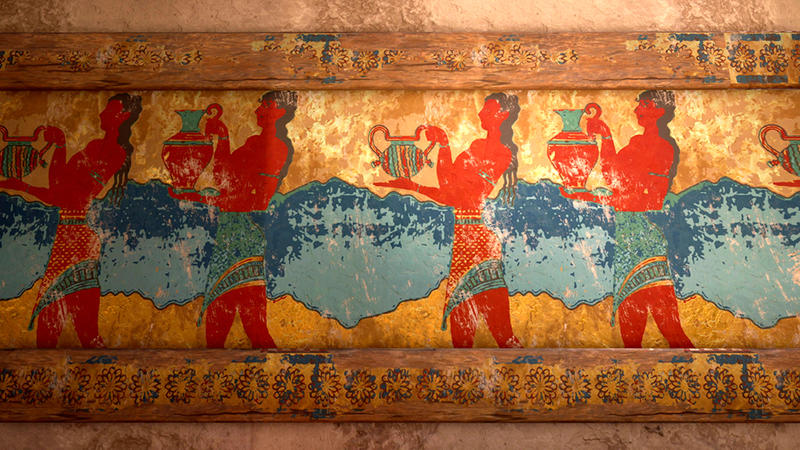
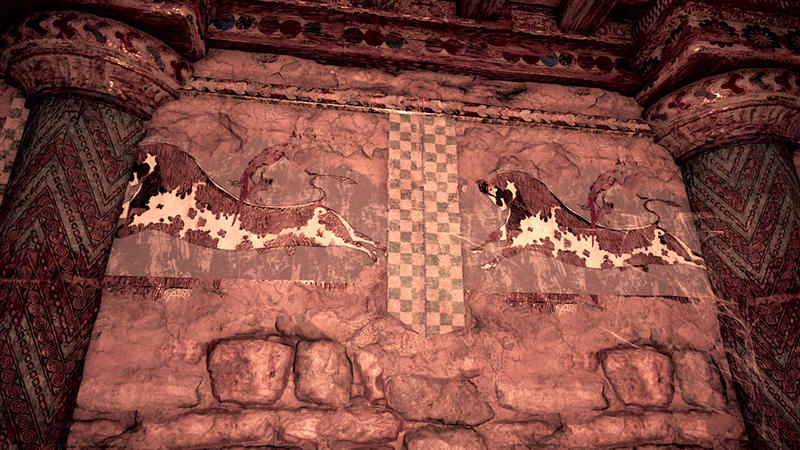
The game also includes the monumental Grand Staircase, described as one of the masterpieces of Minoan architecture, and also reconstructed by Evans. In the game, the staircase leads the players down into the depths of the Palace where the Minotaur dwells.
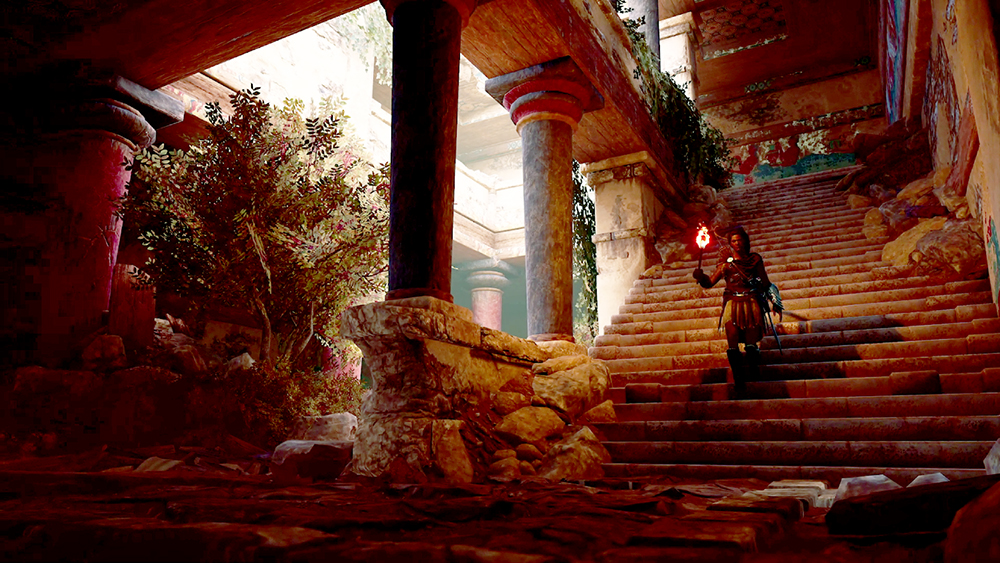
Like Theseus, the player is led down the staircase to the depths of the Palace © Assassin's Creed & Ubisoft Entertainment
Assassin’s Creed Odyssey is a tribute to the cultural heritage of Ancient Greece, its fascinating mythology, and the stories depicting Gods, heroes, monsters, and places.
Many iconic mythical creatures have a role in the game’s storyline in the form of missions that the player needs to complete. For example, Medusa, the Sphinx, the Cyclops, and of course… the Minotaur, all have important roles in the game. The Palace's enclosure serves as the entrance to a more fanciful reinterpretation of Daedalus’ Labyrinth.

Facing the Minotaur armed with double axe © Assassin's Creed & Ubisoft Entertainment
Just like Theseus, the player has to follow Ariadne’s ball of thread, in order to find and slay the monster. This particular quest was designed to be a challenge; the Minotaur was created as a very powerful character, very difficult to beat.
Before venturing into the Labyrinth, players need to be seasoned and well prepared!
The Assassin's Creed Odyssey game and the Assassin’s Creed Odyssey experience at the Ashmolean Museum are collective achievements, thanks to everyone involved in their creation.
Assassin's Creed in the Ashmolean's Labyrinth exhibition

Experience the game in the Labyrinth exhibition
Ubisoft have created a video specially for the Ashmolean's current Labyrinth: Knossos, Myth & Reality exhibition to demonstrate the research behind the Assassin's Creed Odyssey game. The film, on display in one of the exhibition's galleries, shows a unique virtual tour of the Knossos Palace through the digital recreation of the site in the game.
Visit the exhibition to see many of the historic objects, and scenes from history, that informed the game first-hand.



